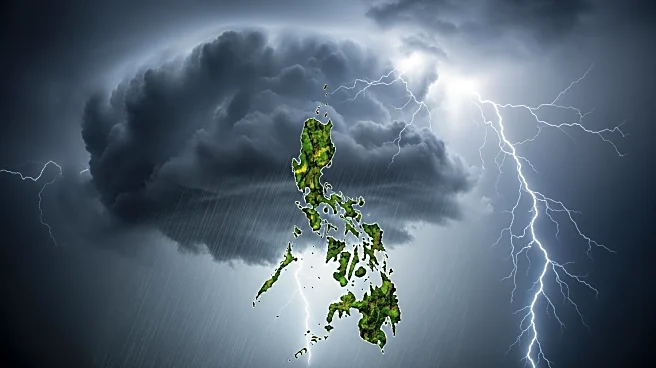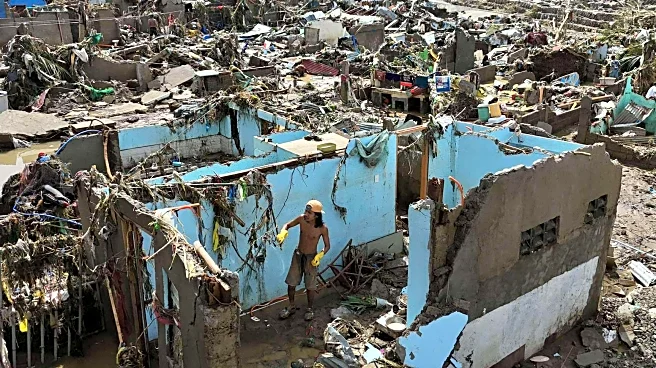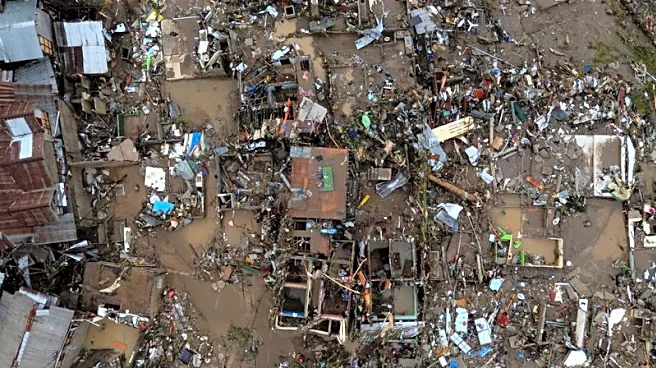What's Happening?
Typhoon Kalmaegi, also known as Typhoon Tino, has caused significant destruction in the Philippines, with the death toll rising to nearly 200. The storm swept through low-lying areas in the country's center, leading to severe flooding and prompting urgent
search-and-rescue operations. According to the Philippine News Agency, 188 people have died, and 127 are reported missing. The typhoon displaced over 560,000 residents, with nearly 450,000 evacuated to emergency shelters. The storm initially struck the Philippines on Tuesday and has since moved across the South China Sea, making landfall in Vietnam with wind speeds of up to 82 mph.
Why It's Important?
The impact of Typhoon Kalmaegi highlights the vulnerability of the Philippines to natural disasters, particularly in low-lying areas. The extensive displacement and loss of life underscore the need for improved disaster preparedness and response strategies. The storm's progression to Vietnam and potential impact on Cambodia and Thailand raises concerns about regional stability and the capacity of these countries to manage such crises. The U.S. Embassy in Vietnam has issued warnings about heightened flooding risks, emphasizing the broader implications for infrastructure and public safety in affected areas.
What's Next?
As Typhoon Kalmaegi continues its path, it is expected to weaken gradually while moving northwest. The focus will remain on search-and-rescue efforts in the Philippines and Vietnam, with authorities working to provide aid and support to displaced populations. The storm's impact on Cambodia and Thailand will be closely monitored, with potential for further evacuations and emergency responses. International aid and support may be mobilized to assist affected regions in recovery and rebuilding efforts.
Beyond the Headlines
The devastation caused by Typhoon Kalmaegi may prompt discussions on climate change and its role in intensifying weather patterns. The frequency and severity of such storms could lead to long-term shifts in regional policies regarding disaster management and climate adaptation strategies. Additionally, the humanitarian response to this crisis may influence future international cooperation in disaster relief efforts.















